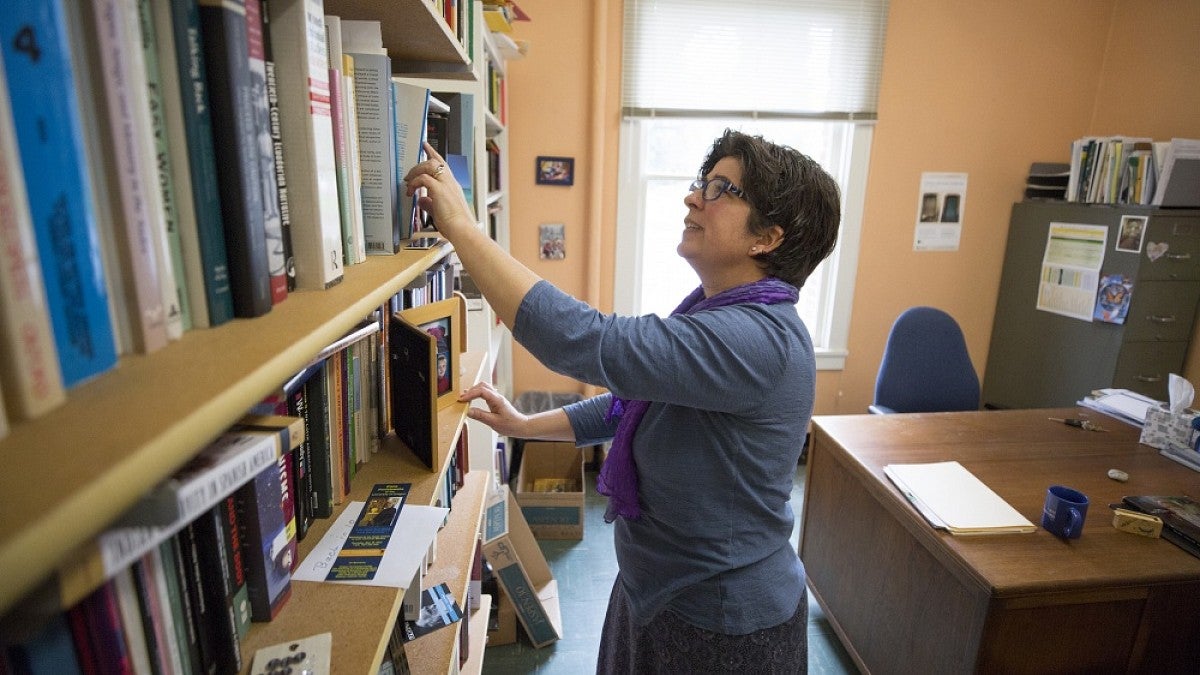UO Spanish professor Amalia Gladhart has several book recommendations she wants to share to help deepen people’s understanding of world literature — if only they weren’t written in Spanish.
But some of Gladhart’s favorite texts are written in that romance language. So about a decade ago she started translating published writing from Spanish to English because she wants to make those books and other written work more accessible to a broader audience.
Her newest project is to translate Argentine writer Angélica Gorodischer’s “Jaguar’s Tomb,” a 218-page novel that explores the difficulty of representing loss and grief in literature. Gladhart was awarded a prestigious 2018 National Endowment for the Arts literature translation fellowship to complete the work.
“I think it’s important to translate books like ‘Jaguar’s Tomb’ because I want to broaden and complicate people’s ideas about Latin American literature,” Gladhart said. “In some ways, this novel will meet reader’s expectations of Argentine literature. But in other ways, it will interrupt and challenge their expectations.”
The National Endowment for the Arts funds translation projects like Gladhart’s because the organization shares her desire to make more fiction, creative nonfiction and poetry available to an English-speaking audience.
“Jaguar’s Tomb” will be the second novel of Gorodischer’s that Gladhart has translated. She first met the author while she was teaching at a study abroad program in Argentina and searching for a new translation project. The site director facilitated an introduction with Gorodischer and Gladhart was immediately captivated by the author and her writing, which she lauds as being thought-provoking, funny and engaging.
“Angélica Gorodischer is such an interesting author to translate because she pushes the edge of many genres,” Gladhart said.
She describes Gorodischer as a prolific writer who has published a diverse body of work, including short stories, science fiction, novels, feminist commentary and a regular newspaper column that covers the gamut from politics to culture. The author is pushing 90 years of age and is still actively writing and offering support to emerging female authors.
Gladhart was drawn to “Jaguar’s Tomb” because she’s interested in probing the central problem of the book: the expression of absence. Gorodischer uses a trio of different narrators to explore the difficulty of representing absence, including absences related to the abductions and disappearances that occurred during the military dictatorship in Argentina's "dirty war" of 1976-83.
To read the novel as a citizen of Argentina in 2005 would be a very different experience from reading the translation in the United States in 2018, Gladhart points out. This contextual difference is one of many considerations that she will take into account as she translates the book and aims to uphold the intricacies of the story and the questions it raises.
The English words that she selects for the translation are obviously another factor Gladhart will need to consider — one that is not as simple as just exchanging Spanish words for their English counterparts.
“Every single word is different in translation,” Gladhart said. “Each Spanish word has a constellation of words it might connect to. And while an English word might share its definition in the dictionary, it has an entirely different constellation of words attached to it.”
Gladhart finds that dichotomy adds an enjoyable complexity to translation work. She sees an appealing challenge in trying to remake the story using different tools and word connotations. She’s discovered that she’s drawn to work that involves a generous amount of word play and puzzles to solve.
Historical details and literary devices and contextual clues also must be taken into account. She explains that she spends hours researching references that might contain a deeper meaning: Is there a reason the author incorporated a specific type of food or plant or location? If so, Gladhart tries to honor that symbolism in her translation.
“I aim to present my fullest expression of my understanding of the text through my translation,” she said. “There are so many different ways that one can read and understand something. Translating stories is really a mix of the scholarly and creative.”
The fellowship will give Gladhart more time to fully immerse herself in the work and word play of translating “Jaguar’s Tomb.” Once the project is complete in 2019, it probably won’t be long before she finds another text to tackle so she can share even more writing with a larger audience.
“There are so many exciting and odd and interesting stories in the world that we wouldn’t get to read without translations,” she said.
—By Emily Halnon, University Communications


